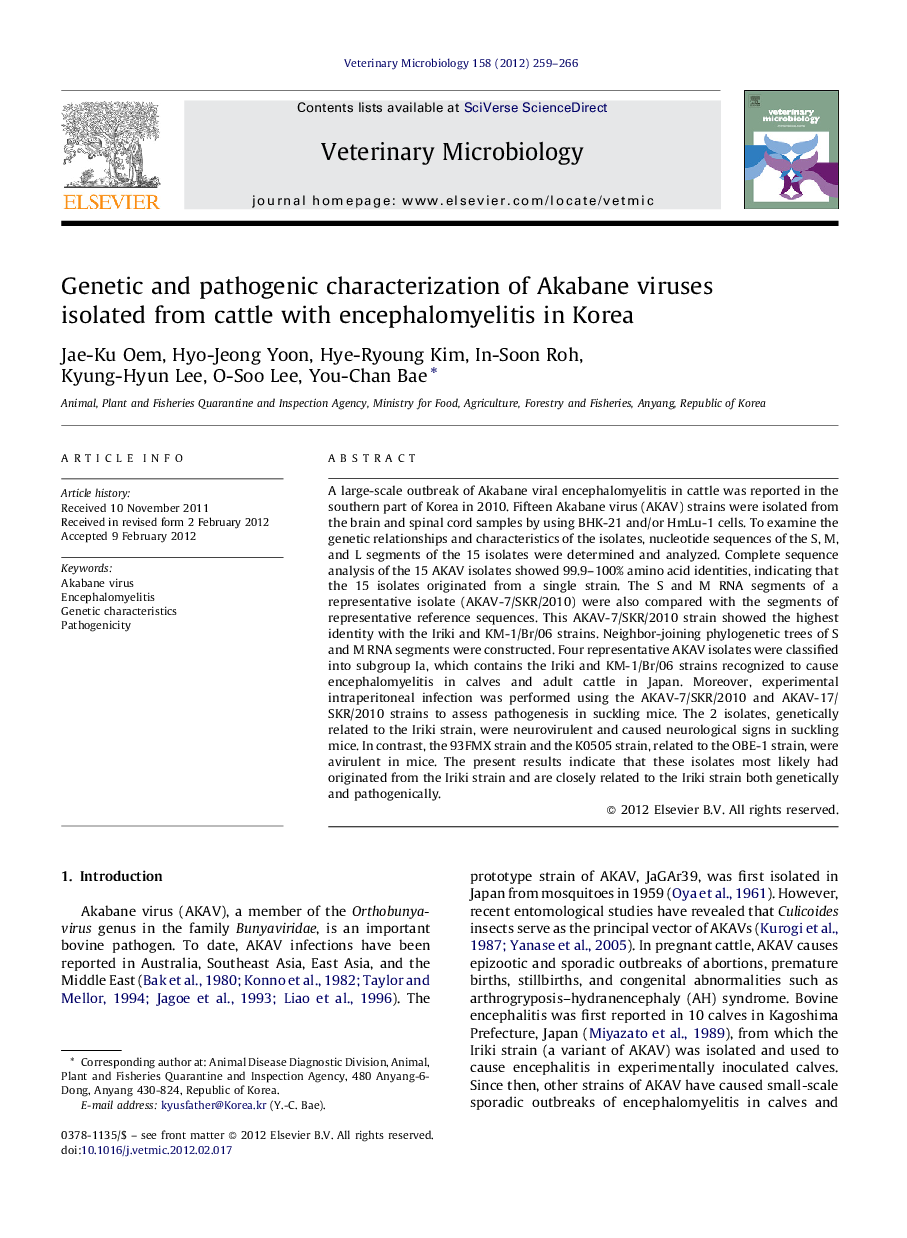| Article ID | Journal | Published Year | Pages | File Type |
|---|---|---|---|---|
| 2467096 | Veterinary Microbiology | 2012 | 8 Pages |
A large-scale outbreak of Akabane viral encephalomyelitis in cattle was reported in the southern part of Korea in 2010. Fifteen Akabane virus (AKAV) strains were isolated from the brain and spinal cord samples by using BHK-21 and/or HmLu-1 cells. To examine the genetic relationships and characteristics of the isolates, nucleotide sequences of the S, M, and L segments of the 15 isolates were determined and analyzed. Complete sequence analysis of the 15 AKAV isolates showed 99.9–100% amino acid identities, indicating that the 15 isolates originated from a single strain. The S and M RNA segments of a representative isolate (AKAV-7/SKR/2010) were also compared with the segments of representative reference sequences. This AKAV-7/SKR/2010 strain showed the highest identity with the Iriki and KM-1/Br/06 strains. Neighbor-joining phylogenetic trees of S and M RNA segments were constructed. Four representative AKAV isolates were classified into subgroup Ia, which contains the Iriki and KM-1/Br/06 strains recognized to cause encephalomyelitis in calves and adult cattle in Japan. Moreover, experimental intraperitoneal infection was performed using the AKAV-7/SKR/2010 and AKAV-17/SKR/2010 strains to assess pathogenesis in suckling mice. The 2 isolates, genetically related to the Iriki strain, were neurovirulent and caused neurological signs in suckling mice. In contrast, the 93FMX strain and the K0505 strain, related to the OBE-1 strain, were avirulent in mice. The present results indicate that these isolates most likely had originated from the Iriki strain and are closely related to the Iriki strain both genetically and pathogenically.
